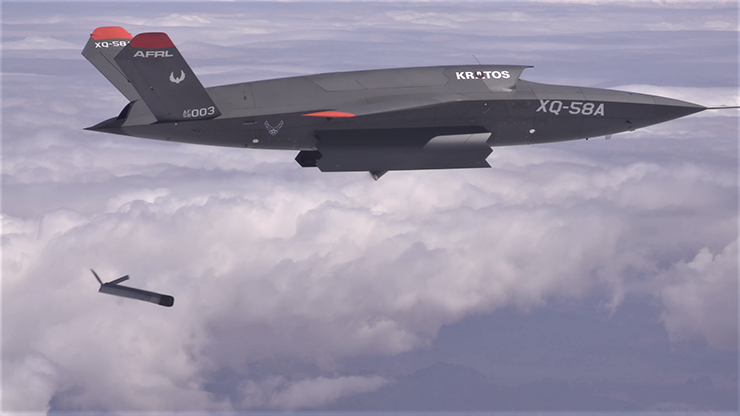 Washington: The US Air Force wants its forthcoming collaborative combat aircraft — a family of drones that can link up with and fly alongside fighters like the F-35 and its next generation cousin — to be relatively cheap, but that doesn’t mean they’ll be expendable, said an Air Force general involved in their development.
Washington: The US Air Force wants its forthcoming collaborative combat aircraft — a family of drones that can link up with and fly alongside fighters like the F-35 and its next generation cousin — to be relatively cheap, but that doesn’t mean they’ll be expendable, said an Air Force general involved in their development.
Officials have been striving to get costs down on the drones as they look to scale up production, with an initial buy of 1,000 now planned for the Air Force. Despite some previous industry chatter that the drones could serve as relatively cheap, disposable — or attritable — airframes in combat, and an analysis from the Air Force Scientific Advisory Board that previously supported that conclusion, Maj. Gen. R. Scott Jobe indicated the service wants to ensure they’ll make it to a fight and back again.
The push for affordability “doesn’t mean… that this is an attritable type of platform,” Jobe, Director of Plans, Programs, and Requirements at Air Combat Command, said during a panel at the Air and Space Force Association’s Air Warfare Symposium. “That’s a common misconception.”
Rather, the service envisions the drones providing an “affordable mass,” or in other words, a cheaper alternative to supplement its increasingly pricey fleet of fighters. To do so, the drones will be expected to fulfil an array of missions, from providing additional sensors to extra missiles. Secretary of the Air Force Frank Kendall said “one way to think of CCAs is as remotely controlled versions of the targeting pods, electronic warfare pods or weapons now carried under the wings of our crewed aircraft.”
Officials said a careful balance must be struck between their affordability and capability.
“Affordability is only as good as the capability you can deliver,” Brig. Gen. Dale White, Program Executive Officer for Fighters and Advanced Aircraft, said on the panel. “That is going to drive that trade.”
Kendall indicated the drones are being designed around a requirement that they be a “fraction” of the cost of the F-35, though a specific price point is not yet clear. An F-35, for example, costs about $80 million per copy, though that number is expected to rise. A Reaper drone, by comparison, comes with a sticker price of around $30 million.
Jobe said the CCAs will first focus on offensive counter-air missions, such as escorts and reconnaissance sweeps following an attack. He said that the drones will add a new element to air missions, such as enabling different fire and manoeuvre tactics, and change the risk calculus for engagements.
Since officials expect the CCAs to have modular parts and be upgraded through iterative designs, the Air Force may need to consider new ways to certify them for flight, David Alexander, President of the Aircraft Systems Group at General Atomics, said on the panel.
“You can’t get hung up in a program that’s going to have to go through an airworthiness panel every time you want to release a new set of autonomy [systems] or a new algorithm,” he said.
Mike Benitez, director of product at Shield AI, said a choke point for CCA development is the number of airplanes that can do autonomy experimentation. His company only has access to a handful, he said, such as the F-16 Variable In-flight Simulator Aircraft (VISTA) and the XQ-58 Valkyrie built by Kratos.
“We really have access problems to platforms,” Benitez said, an issue the company is likely trying to address through its newly-announced partnership with Boeing.
Service acquisition chief Andrew Hunter said the initial tranche of collaborative combat aircraft wingmen are “very much within grasp,” with capability expected to be delivered by the end of the decade. And to get there, White stressed that the program cannot get trapped in an extended development. “We have to fail forward here,” he said.








